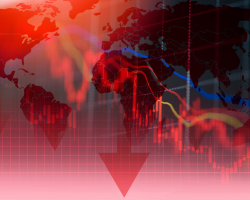A Chronicle of the Most Devastating Stock Market Crashes in US History
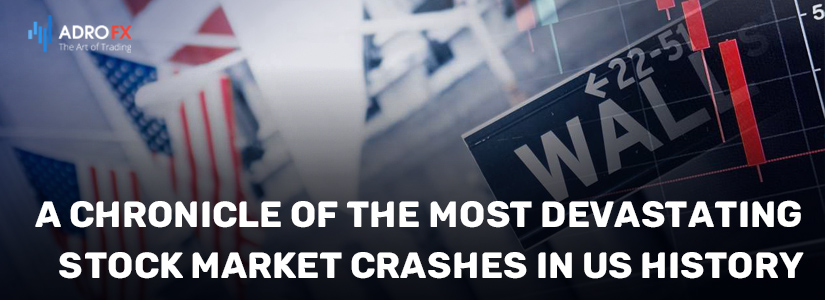
Financial crises are seismic events that reverberate through the world of finance and economics, leaving a trail of chaos in their wake. These crises are defined by a sudden and profound disruption in the regular operations of financial markets, institutions, and systems. They can take various forms, including stock market crashes, banking sector turmoil, or currency devaluations, and often set off a chain reaction of economic challenges. At their core, financial crises reflect a loss of confidence and trust in the stability of financial markets and institutions. This erosion of confidence can spark panic, leading to widespread withdrawals of funds, sharp asset price declines, and the potential collapse of financial institutions. In essence, a financial crisis isn't just a financial event; it's a crisis of confidence, challenging the stability and reliability of the financial system itself. This article explores the nature, causes, and historical examples of financial crises, shedding light on the tumult they can create in the world of finance and beyond.
What Is a Financial Crisis?
A financial crisis is a tumultuous and disruptive event within the realm of finance and economics that can have far-reaching consequences. It is marked by a sudden and severe disruption in the normal functioning of financial markets, institutions, and systems. Financial crises can manifest in various forms, including stock market crashes, banking sector turmoil, or currency devaluations, and they often result in a chain reaction of economic challenges.
At the heart of a financial crisis lies a loss of confidence and trust in the stability of financial markets and institutions. This loss of confidence can trigger panic, leading to widespread withdrawals of funds, sharp declines in asset prices, and the potential collapse of financial institutions. In essence, a financial crisis is not just a financial event but a crisis of confidence and a loss of faith in the stability and reliability of the financial system.
These crises are typically characterized by several common features:
- Panic and Asset Price Declines
During a financial crisis, investors often rush to liquidate their holdings, leading to a rapid and significant drop in the prices of various financial assets, including stocks, bonds, and real estate. - Liquidity Shortages
Financial institutions may face a shortage of liquidity, making it difficult for them to meet their short-term obligations, which can further exacerbate the crisis. - Bank Runs
A loss of confidence in banks can trigger bank runs, where depositors rush to withdraw their funds, potentially leading to the collapse of banks and further disrupting the financial system. - Economic Downturn
Financial crises frequently lead to economic recessions or depressions as the disruption in the financial system hampers the flow of credit and investment, affecting businesses and consumers alike. - Government Intervention
Governments and central banks often step in to stabilize the situation, providing emergency funding to banks, implementing regulatory changes, and pursuing monetary policy adjustments to mitigate the crisis's impact.
Financial crises can have profound and long-lasting effects on economies and individuals, impacting savings, investments, job security, and overall economic well-being.
Understanding the causes, dynamics, and consequences of financial crises is crucial for individuals and policymakers to navigate these challenging times and work toward more stable and resilient financial systems.
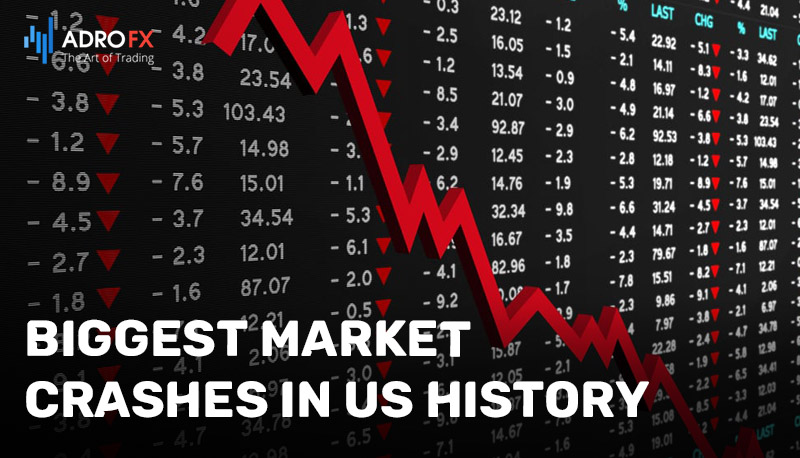
Biggest Market Crashes in US History
There have been several devastating stock market crashes in the history of the United States. Here are some of the most significant ones:
Panic of 1837
The Panic of 1837 was a severe financial crisis triggered by rampant speculation and overspeculation in land and commodities, especially in Western and Southern states. As land prices skyrocketed, fueled by speculation and easy credit, a bubble formed and eventually burst.
Banks failed, credit evaporated, and a widespread economic depression followed. Businesses closed, unemployment soared, and foreclosures were rampant. This crisis lasted until the mid-1840s.
The Panic of 1837 underscored the need for more robust financial regulation and the dangers of speculative bubbles in the emerging American economy.
The Great Depression (1929)
The 1929 stock market crash marked the beginning of the Great Depression, a period of extreme economic hardship in the United States and around the world. The crash was primarily caused by a combination of factors, including excessive speculation, excessive credit, and an unequal distribution of wealth.
The stock market lost about 90% of its value, with the Dow Jones Industrial Average plummeting from its 1929 peak. Millions of people lost their jobs, and many banks and businesses went bankrupt.
The Great Depression led to significant changes in financial regulation, including the establishment of the Securities and Exchange Commission (SEC) and the Glass-Steagall Act, which separated commercial and investment banking activities.
Black Monday (1987)
Black Monday, which occurred on October 19, 1987, was a sudden and dramatic stock market crash. It was largely attributed to program trading, where computer algorithms automatically executed a large number of sell orders.
The Dow Jones Industrial Average plunged by over 22% in a single day, the largest one-day percentage drop in history. Traders and investors were in shock as they witnessed their portfolios rapidly decline.
However, the market rebounded relatively quickly, and the long-term economic impact was limited. It led to discussions about market circuit breakers and the need for better risk management in the financial industry.
Dot-com Bubble (2000)
The dot-com bubble was a speculative frenzy in the late 1990s, primarily centered around technology and internet-related stocks. Investors were eager to invest in companies with high valuations but minimal profits.
The bubble burst in 2000, leading to a significant decline in technology stocks. Many dot-com companies went bankrupt, and the NASDAQ Composite Index, which was heavily weighted toward tech companies, lost a substantial portion of its value.
This event demonstrated the importance of due diligence in investing and the risks associated with speculative bubbles.
Financial Crisis of 2008
The 2008 financial crisis was a global economic downturn triggered by the collapse of Lehman Brothers and widespread problems in the banking and housing sectors. It began with the bursting of the housing bubble, which caused a sharp decline in housing prices and mortgage-related securities.
The stock market experienced a severe decline, and financial institutions faced insolvency or needed government bailouts to survive. The crisis led to a severe recession, with rising unemployment and a credit crunch.
To address the crisis, governments around the world implemented stimulus packages, and central banks lowered interest rates.
COVID-19 Pandemic (2020)
The COVID-19 pandemic in 2020 triggered a sudden and sharp stock market decline. As the pandemic spread, lockdowns and economic uncertainty led to a significant market sell-off.
The Dow Jones Industrial Average and other indices experienced a rapid decline, leading to a bear market. However, central bank interventions, government stimulus packages, and hopes for a vaccine-driven economic recovery helped stabilize the markets in the following months.
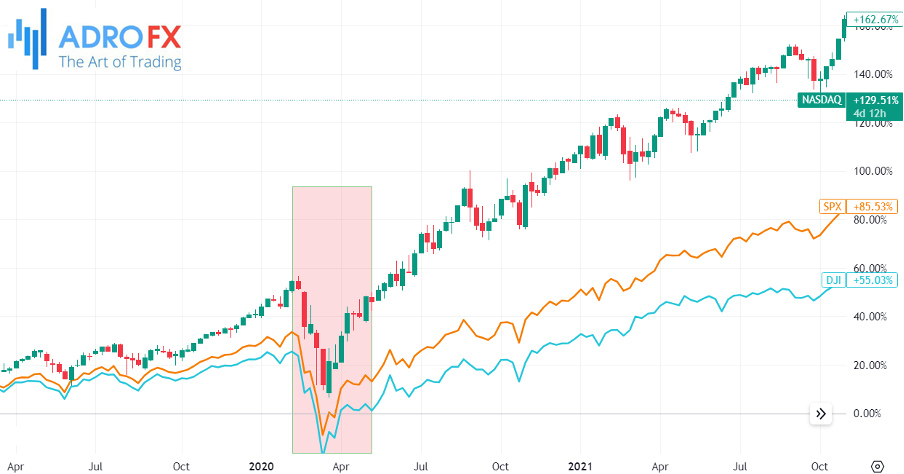
This event highlighted the interconnectedness of global financial markets and the role of government intervention in stabilizing the economy during crises.
These stock market crashes and crises have had a profound impact on the US economy, leading to significant changes in financial regulations and serving as lessons on the importance of risk management and responsible investing.
What Does 2023 Have in Store for Investors and Consumers?
Looking back at 2022, it was a challenging year for stock market investors. The S&P 500 suffered an 18.32% loss for the year, and other market sectors fared even worse. The tech-heavy NASDAQ 100 index plummeted by 33%, marking its worst performance since 2008.
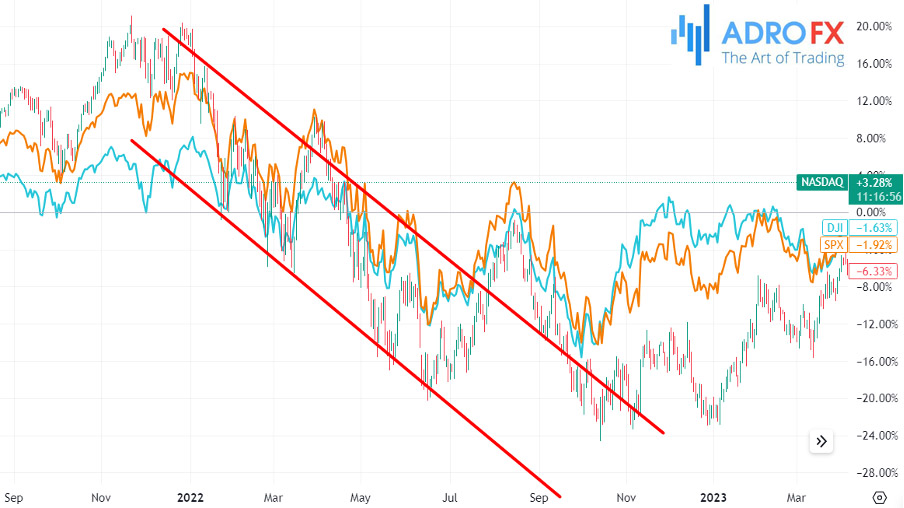
However, the first half of 2023 brought some relief, with a 7.6% gain in the S&P 500 YTD. This raises the question: will the stock market maintain its upward momentum, or will it revisit the relentless declines of 2022?
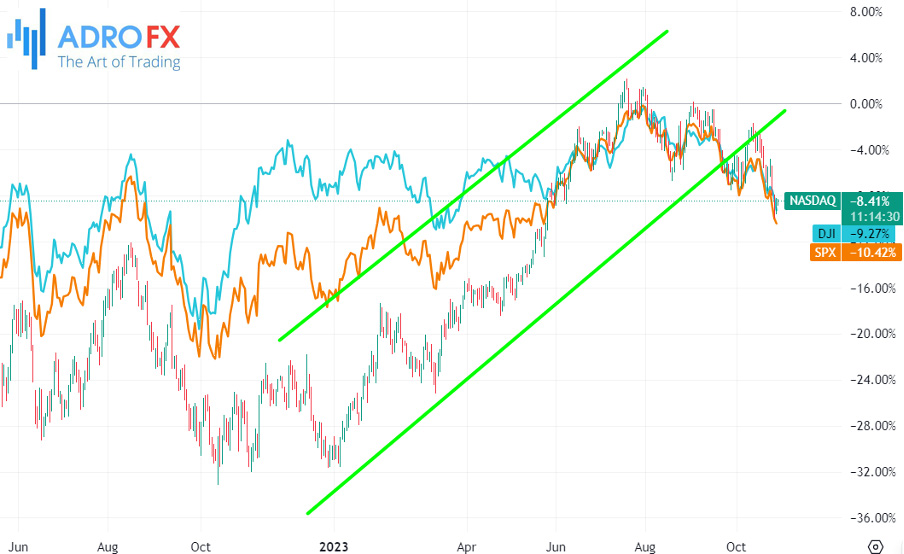
Predicting the market's future remains a complex task, as numerous unresolved events are currently in play. These include the course of inflation and the Federal Reserve's response, an evolving banking crisis, and the ongoing conflict in Ukraine, among others.
How Can You Get Ready?
While the future of the market remains uncertain, there are practical strategies you can employ to better prepare for ongoing market volatility or even a full-blown crash.
- Build Your Cash Reserves
In the face of uncertain market conditions, building up cash reserves is a wise move. Having cash on hand positions you to take advantage of potential opportunities when asset prices correct significantly.
Build cash now so that if substantial market corrections occur, you'll have the ability to invest in assets like homes and autos when they become more attractively priced. - Stay Invested
Market volatility can be nerve-wracking, but it's essential not to let it drive you out of the market. Selling investments when they're down can lead to missed opportunities for recovery. Also, make sure to check your portfolio less frequently during bear markets to minimize stress. - Invest in What You Know
In an environment where not all asset classes are prospering, selectivity becomes crucial, especially for less experienced investors. Focus on investing in areas you understand well. Avoid investments in areas you're not familiar with to mitigate unnecessary risks. - Keep a Close Eye on the Federal Reserve
The Federal Reserve holds a significant influence over the market. Recent market declines have closely followed the Fed's interest rate increases and announcements of their intent to do so.
The Fed's primary goal is to combat inflation, and while inflation appears to be moderating, there's no guarantee it will continue to do so. Additionally, the Fed's actions are influenced by various factors, including disturbances in the banking sector, which could lead to rate freezes or reductions.
Indeed, one could not but notice the continued market volatility in 2023 due to factors such as the Federal Reserve's actions and geopolitical uncertainties. The Fed's decisions, whether to hold rates steady or make changes, will play a pivotal role in stock market performance.
As 2023 unfolds, investors and consumers should remain vigilant, stay informed about economic developments, and be prepared to adapt their strategies to navigate the evolving financial landscape. - Consider Alternative Assets
For more experienced investors willing to embrace additional risk, exploring alternative assets can be a viable option. Ironically, higher-risk assets sometimes outperform traditional stocks and bonds during major market downturns. For instance, while the S&P 500 saw an 18.32% loss in 2022, gold gained 0.4% for the year.
Diversifying your portfolio with alternative asset classes can provide the potential for higher returns and reduced volatility. Investments in areas such as real estate, private credit, art financing, and specialty finance can add stability and attractive risk-adjusted returns to individual portfolios, especially in a climate of rising interest rates. - Invest in Yourself
While it may not be immediately evident, investing in yourself is indeed a valuable form of investment. When financial markets are beyond your control, improving yourself on a personal level becomes an intentional and positive step.
We can recommend several ways to invest in yourself:
- Education: Acquire new skills to enhance job security and earning potential.
- Financial Management: Reduce spending to improve financial management and potentially build up savings.
- Health: Maintain good health to avoid costly medical expenses and enhance overall well-being.
- Personal Relationships: Spend time with family and loved ones for emotional support.
- Mental Well-Being: Practice activities like prayer or meditation to maintain mental and emotional well-being.
Conclusion
As we navigate the intricate landscape of financial markets, it's essential to acknowledge that the path ahead remains uncertain. The market conditions that characterized 2022 may persist or evolve in unforeseeable ways in 2023. In the absence of perfect foresight, the wisest course of action is to prepare for a range of scenarios and develop a financial strategy that accommodates unpredictability and potential volatility.
While financial crises may remain an enduring feature of the financial landscape, the lessons learned from past crises and the strategies we implement can help us navigate the challenges they bring and, ultimately, work towards more stable and resilient financial systems.

About AdroFx
Established in 2018, AdroFx is known for its high technology and its ability to deliver high-quality brokerage services in more than 200 countries around the world. AdroFx makes every effort to keep its customers satisfied and to meet all the trading needs of any trader. With the five types of trading accounts, we have all it takes to fit any traders` needs and styles. The company provides access to 115+ trading instruments, including currencies, metals, stocks, and cryptocurrencies, which make it possible to make the most out of trading on the financial markets. Considering all the above, AdroFx is the perfect variant for anyone who doesn't settle for less than the best.
